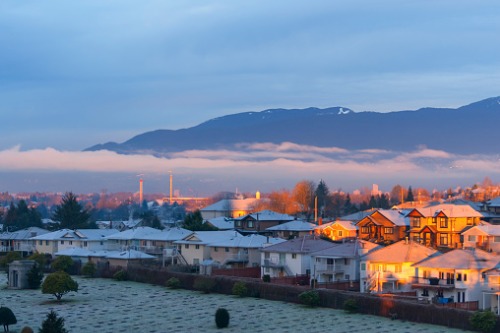The plan is intended to provide buying options for households making as little as $80K a year

On Monday, Vancouver mayor Kennedy Stewart announced an ambitious plan intended to “make Vancouver affordable for the middle class.” The Making HOME (Home Options for Middle-income Earners) initiative would allow for a single-family home to be redeveloped into four smaller homes so long as one is reserved for households making $80,000 a year.
“The house would look like any other house, except it might have four front doors. Three for families that make around $150,000 a year (like two teachers, or an accountant and a tradesperson). And one door reserved for middle-income earners – forever,” reads the recently launched Making HOME website.
Stewart brought the plan to Vancouver city council on Wednesday. His proposed guidelines for rolling out Making HOME as a pilot project involving 100 lots in neighbourhoods zoned for single-family detached homes and duplexes are expected to be delivered to city council by the second quarter of 2021.
“I see a future where families are no longer pushed out of town because their only two options are a condo or a multi-million-dollar house,” Stewart said during a September 14 media briefing.
In his presentation to reporters, Stewart compared the scenario facing buyers in Vancouver today to that of a post-Making HOME environment. Whereas 2.5 percent of residents can currently afford to purchase a home in Vancouver (the average home price in East Van is about $1.4 million), he says Making HOME would make ownership attainable for 50 percent of local residents.
As Stewart explained, the owners of the three “market properties” would each need to earn $135,000 and provide a $110,000 down payment. The middle-income household, the one earning $80,000 a year, would need to provide a $65,000 down payment.
The homes in question won’t exactly be cheap. A case study by zoning-reform advocate Darrell Mussatto determined that three 924-square foot “market homes” on a four-home lot would sell for approximately $1.1 million each, with the remaining 900-square foot property selling for around $450,000.
Mixed reactions
Stewart’s plan has received somewhat mixed reviews. Canada Mortgage and Housing Corporation CEO Evan Siddall thanked Stewart for his “leadership on housing affordability” in a September 15 tweet.
“Densification is our most powerful tool to accelerate the supply of more affordable housing,” Siddall wrote. “This is exactly the kind of innovation our cities need.”
Abundant Housing Vancouver’s Jennifer Bradshaw told CBC that Stewart’s plan will help “some” Vancouverites, but she is concerned that it will ultimately fall short in its goal of providing affordable homes to half the city’s residents.
"There just aren't going to be enough available," she said.
Pemberton Homes Oak Bay realtor Vanessa Roman applauds Stewart for his outside-the-box thinking, but she sees Making HOME as more of a “campaign ploy for the 2022 civic election, rather than a viable solution to increase housing affordability.”
Roman says the proposal’s primary shortcoming is not requiring a higher percentage of affordable homes per lot. In her eyes, the ratio of three market-value homes to one affordable unit (larger lots can house six homes so long as two are kept for middle-income earners) won’t inject enough affordable stock into the city’s housing supply.
“If Mayor Stewart actually wanted to help solve the problem, he would increase the minimum number of required affordable units from one to four, leaving only two units to be sold at market value,” she says. “This ratio means a majority of new units would be offered, and kept, at below market value, which helps to curb rapid increases in land value and increases housing affordability for middle-income earners in Vancouver.”



